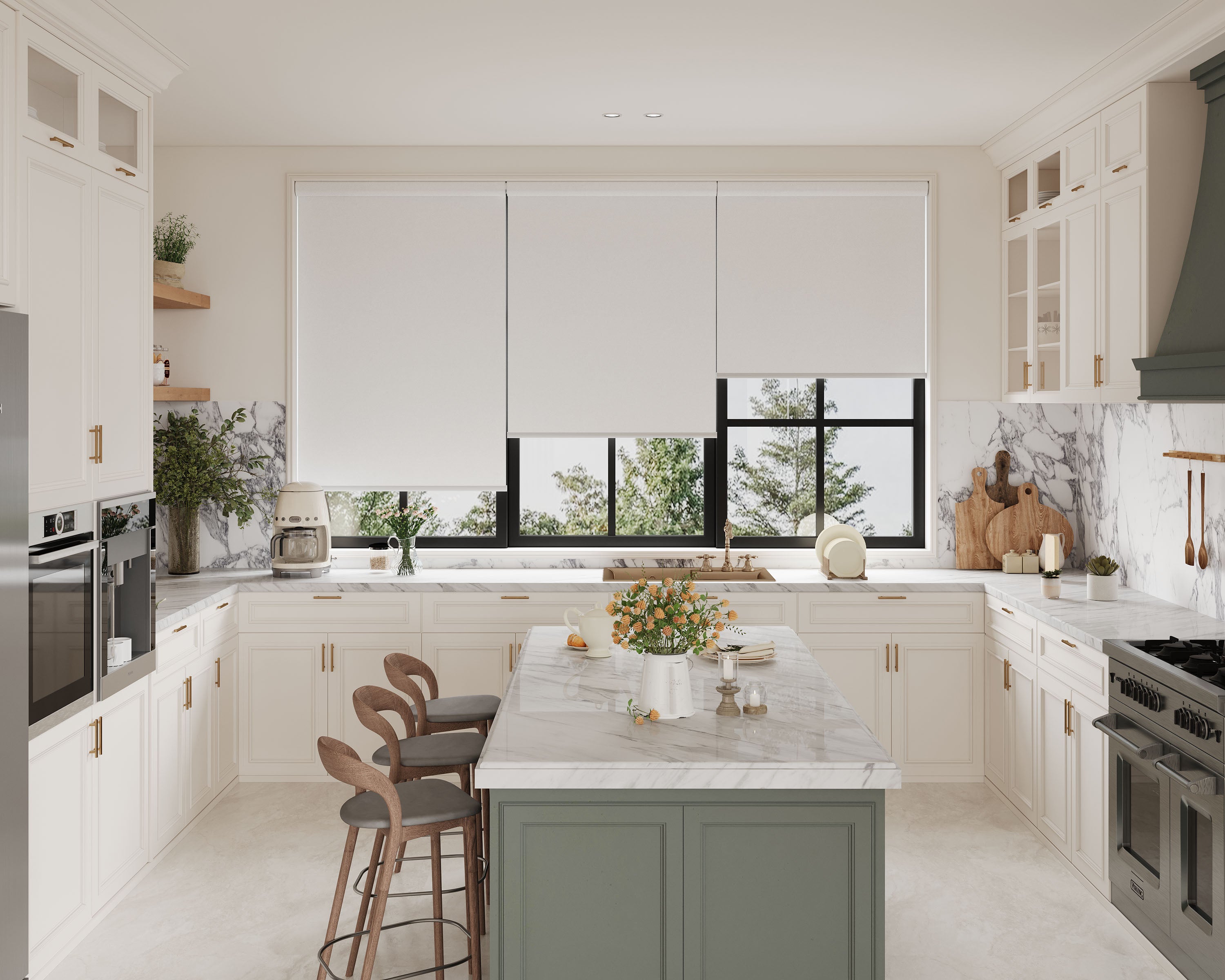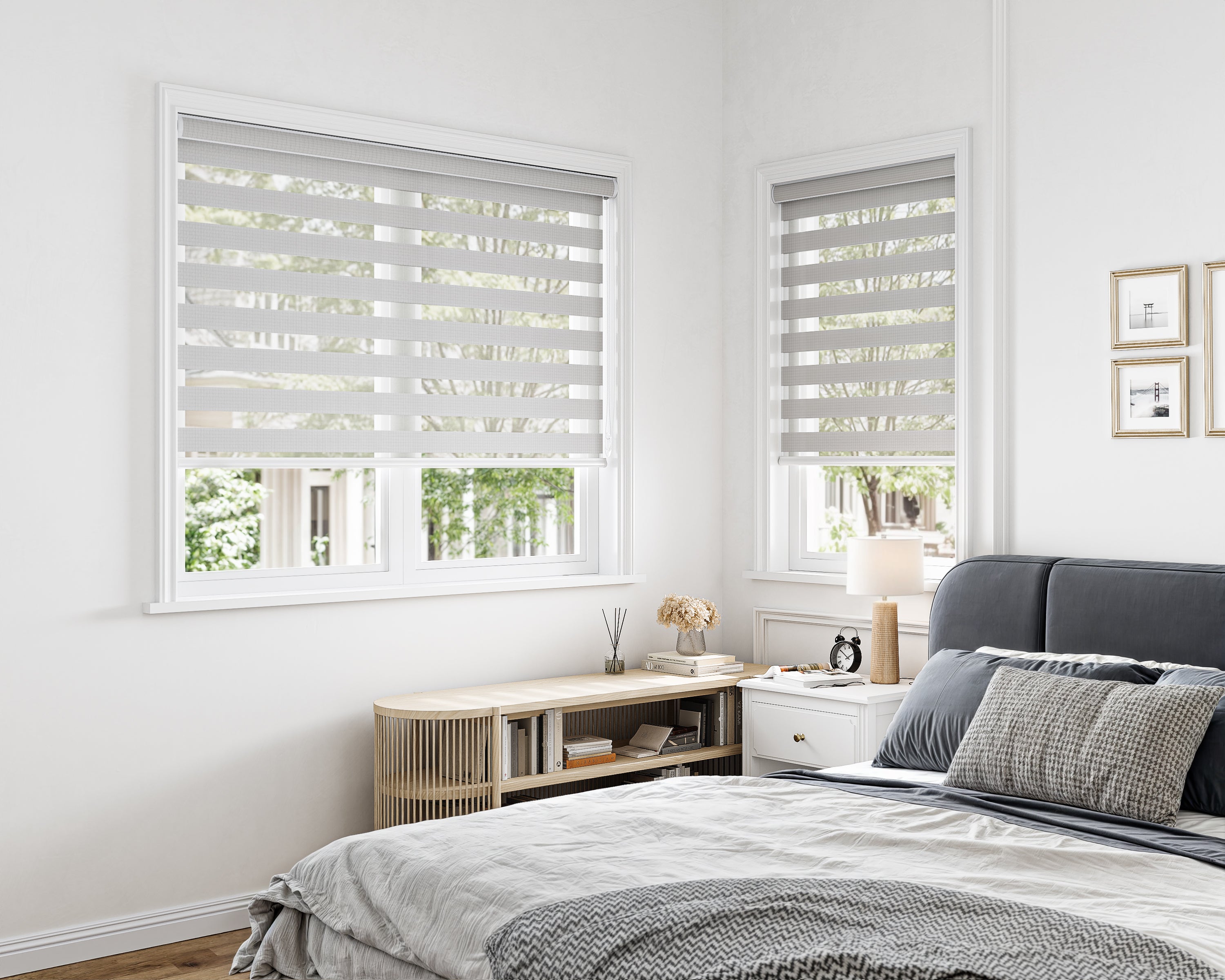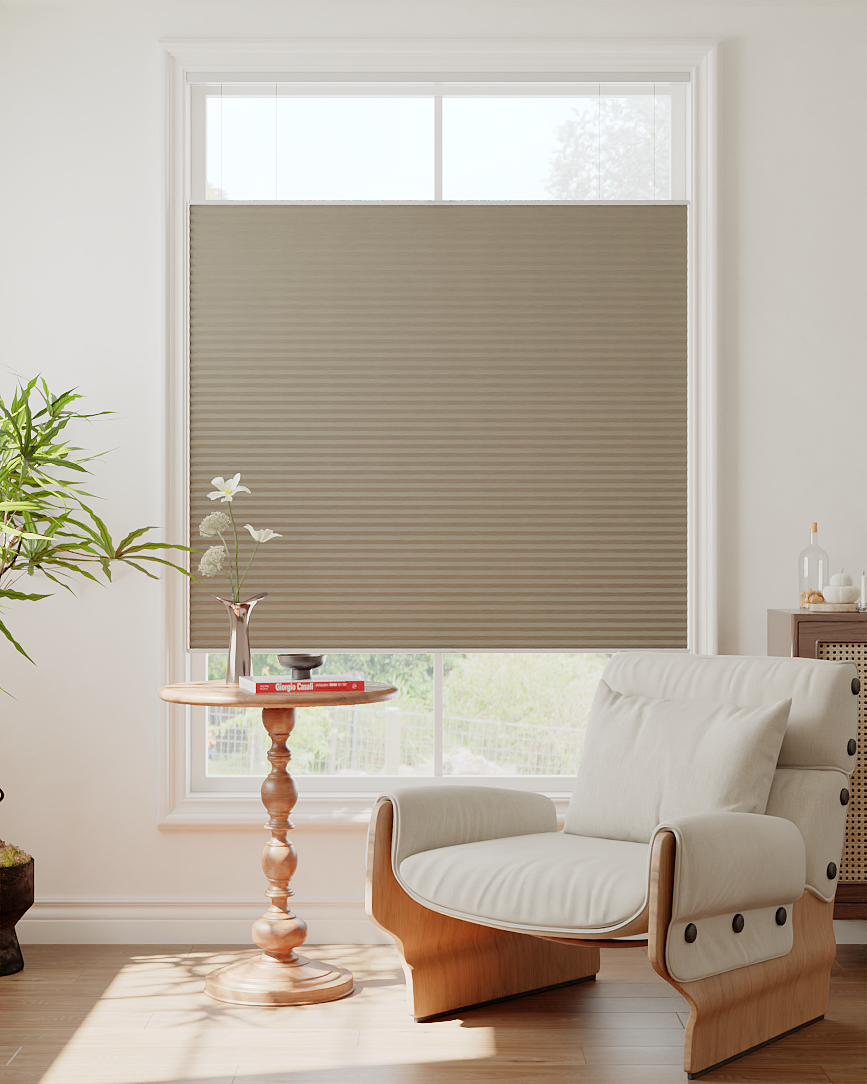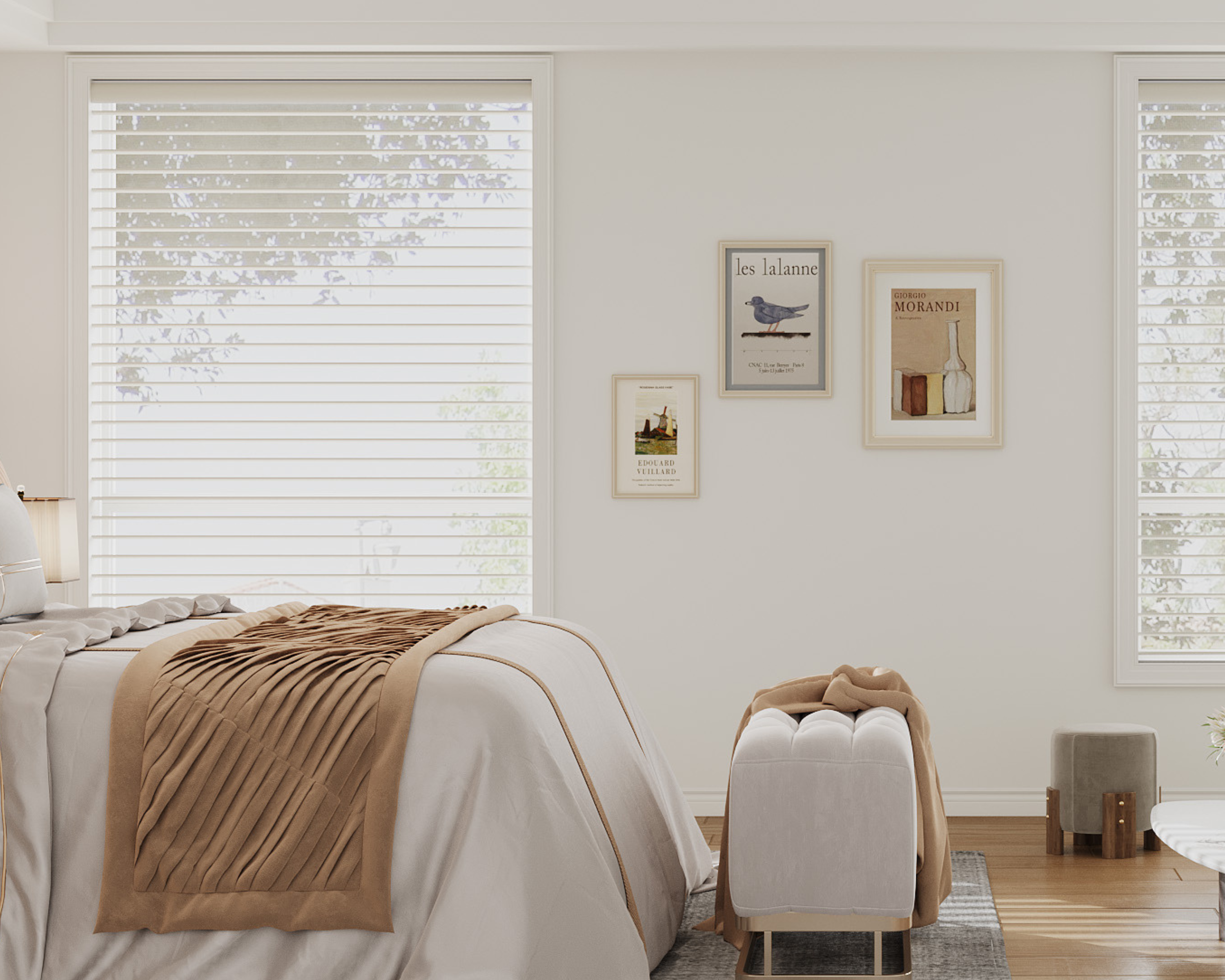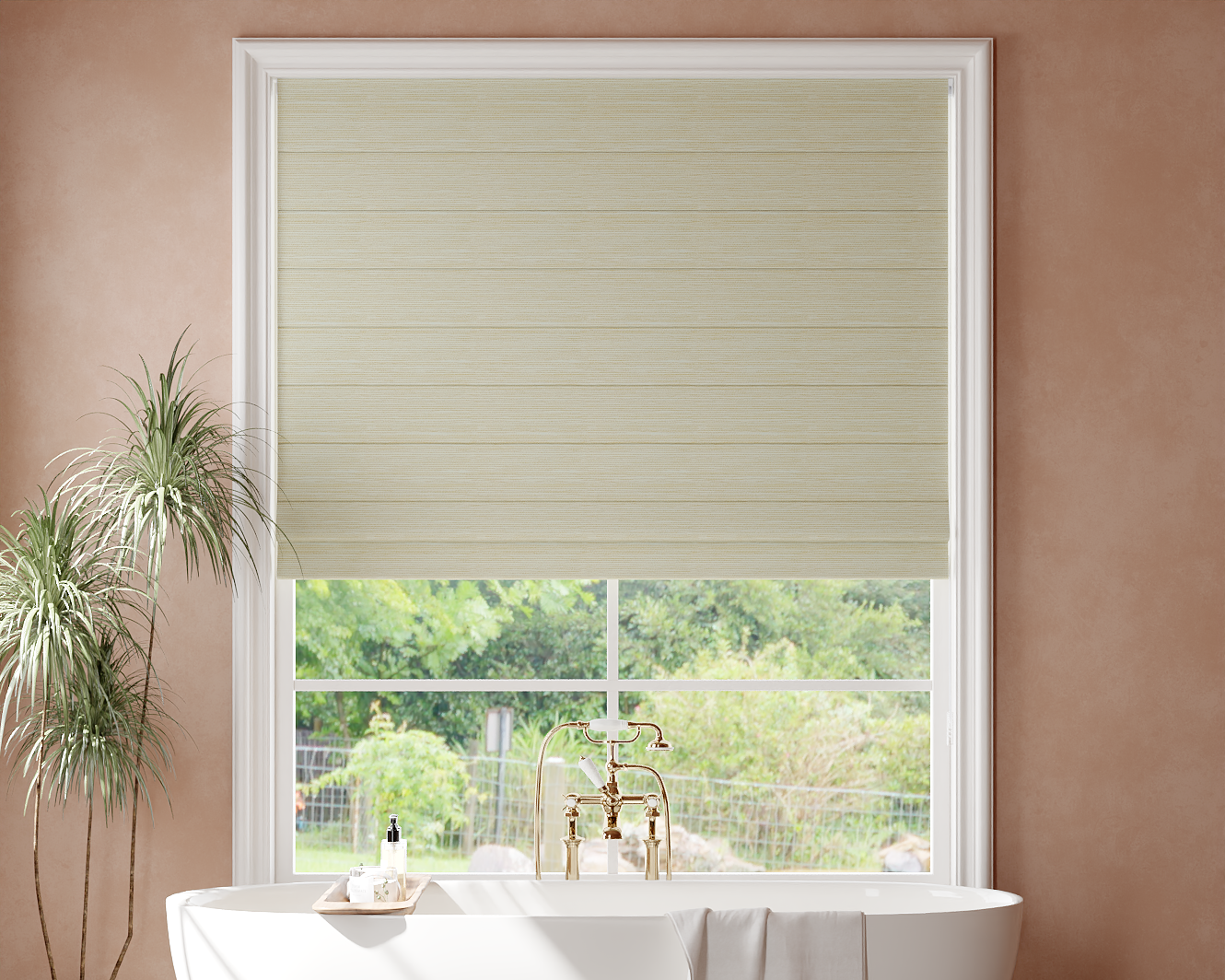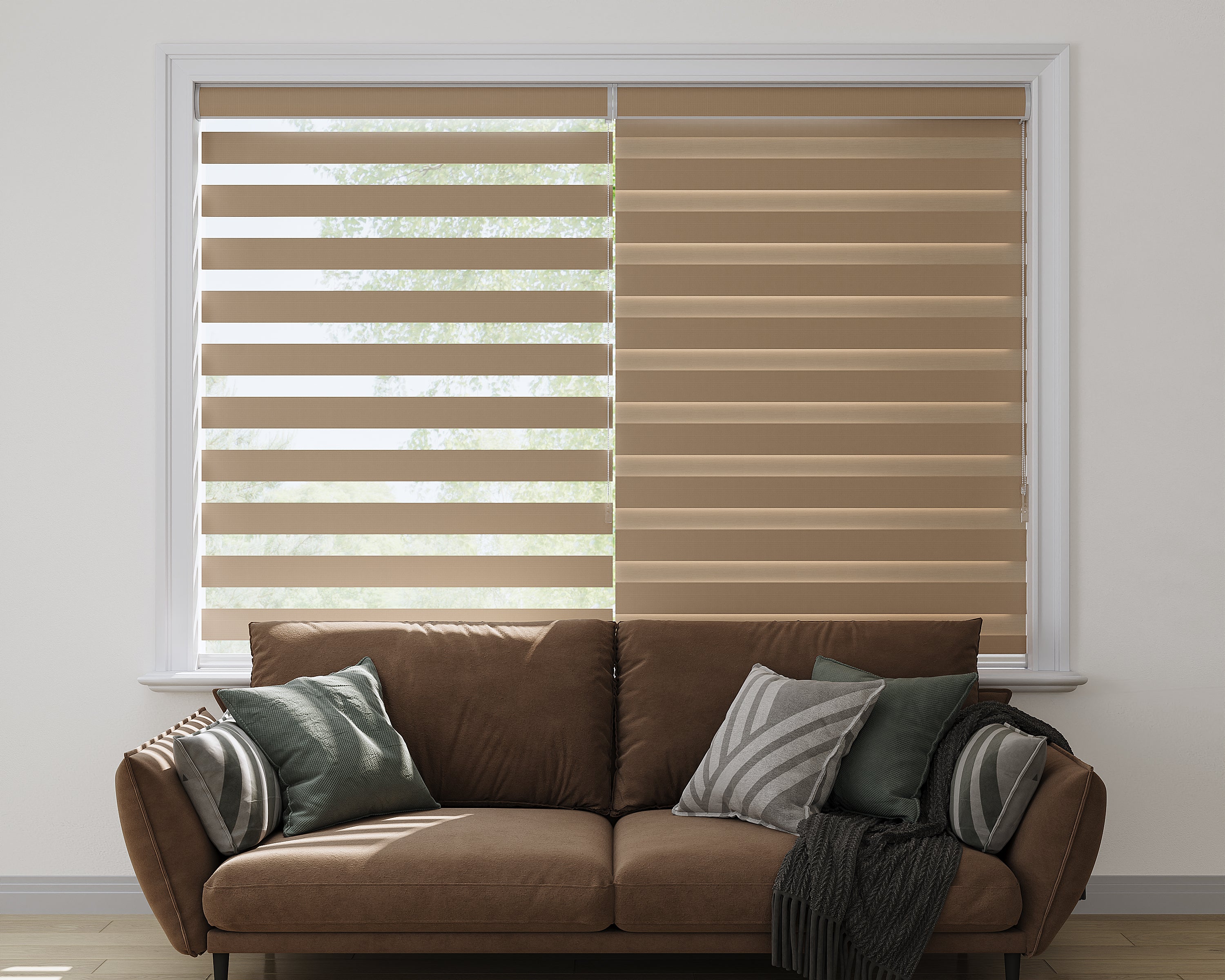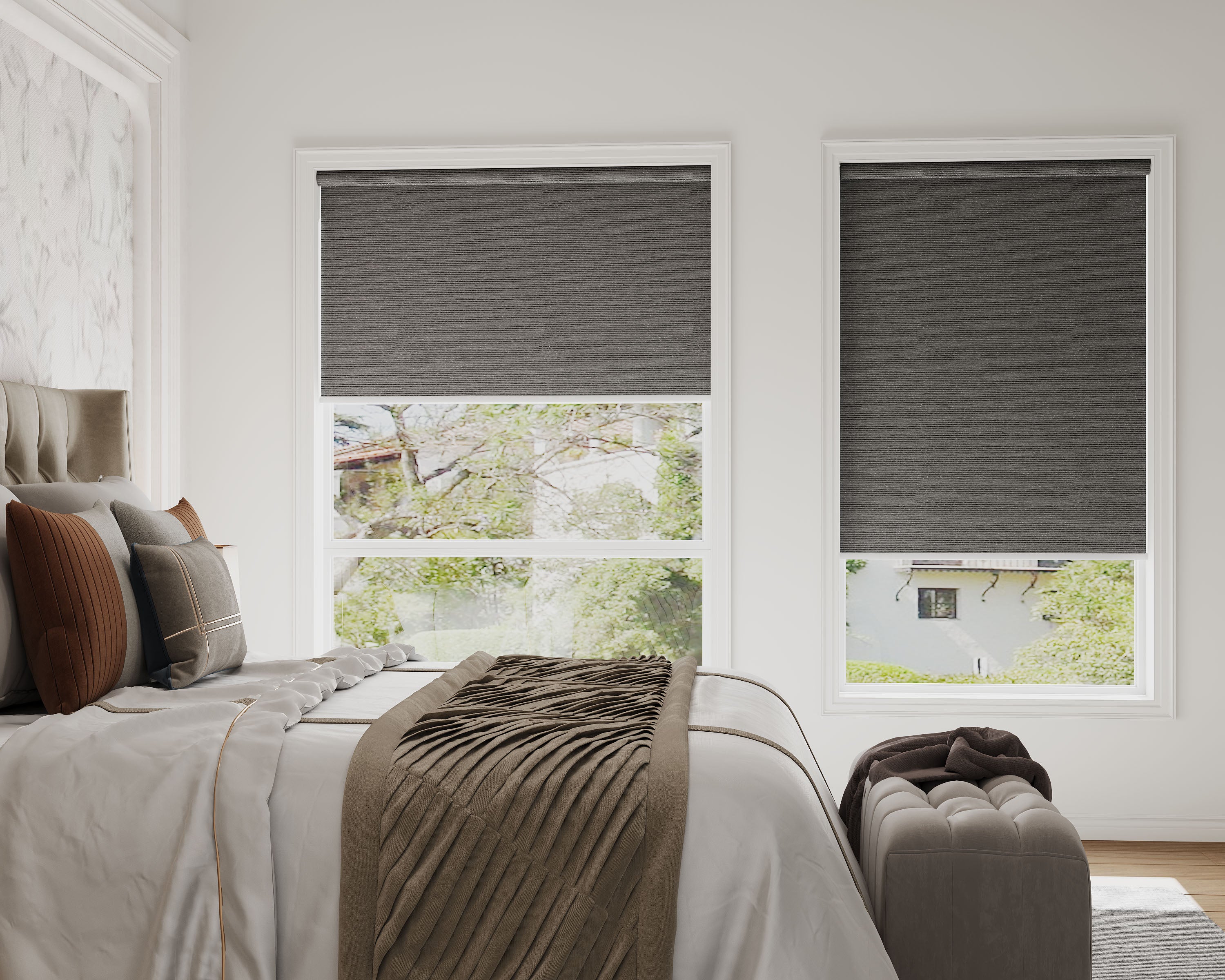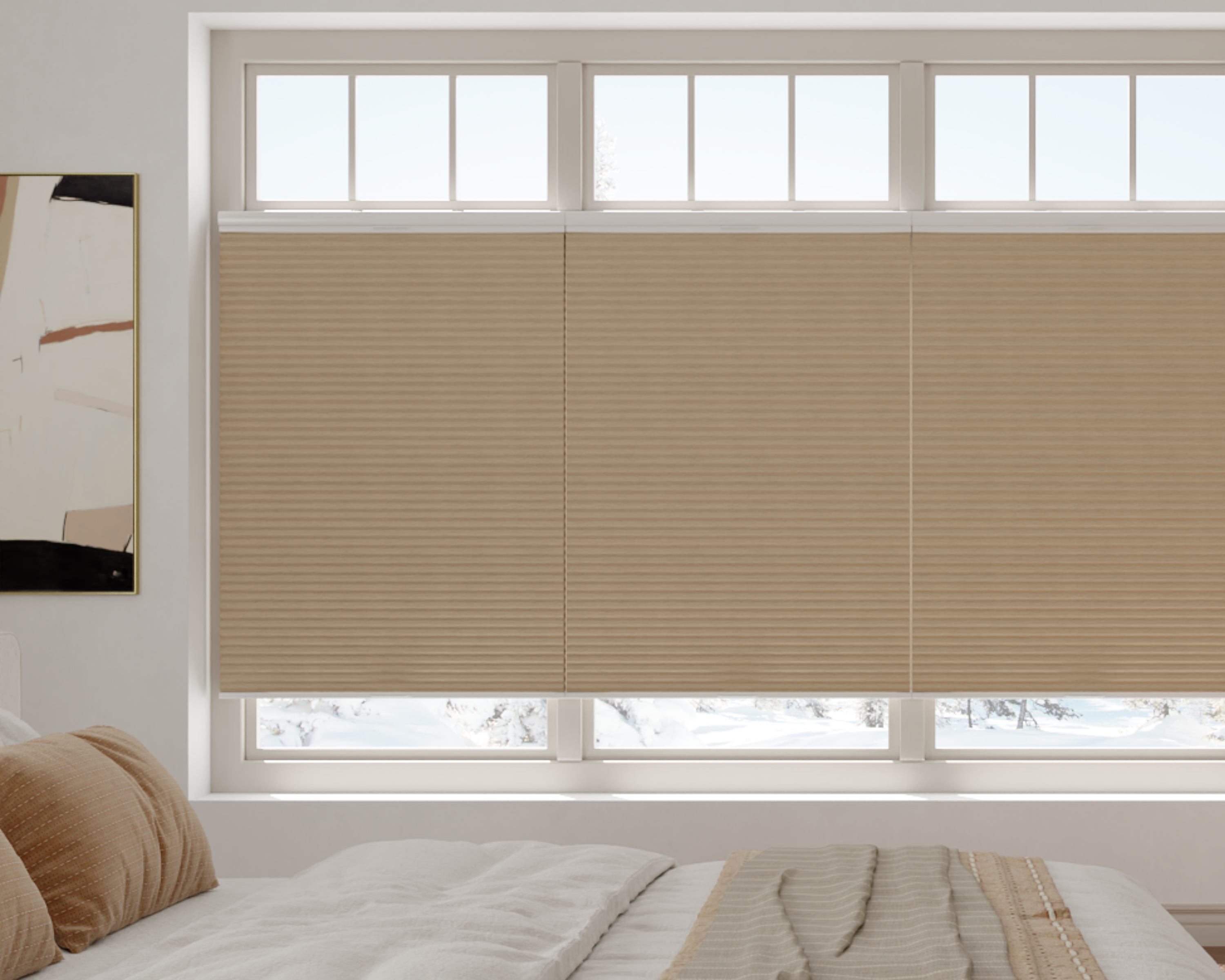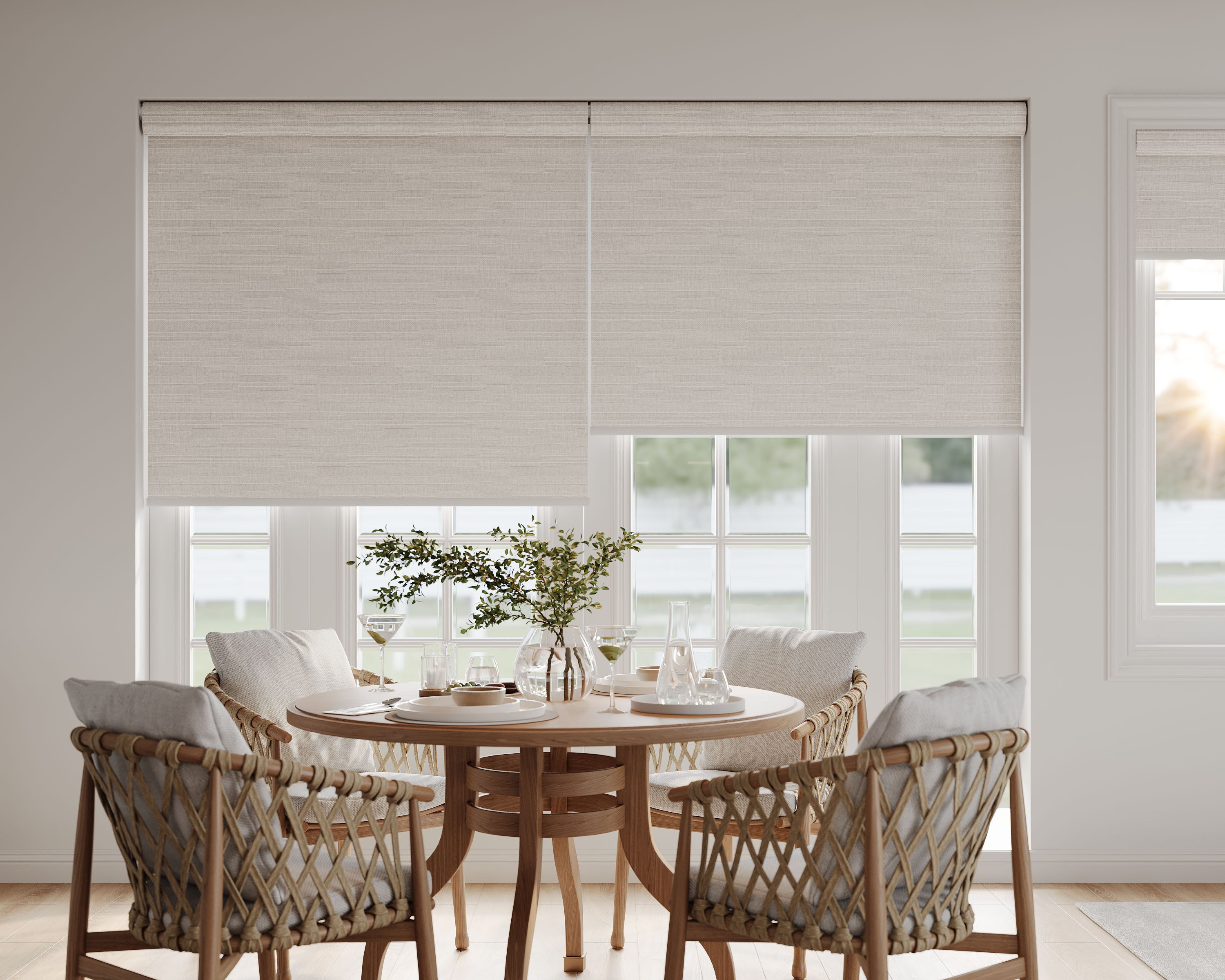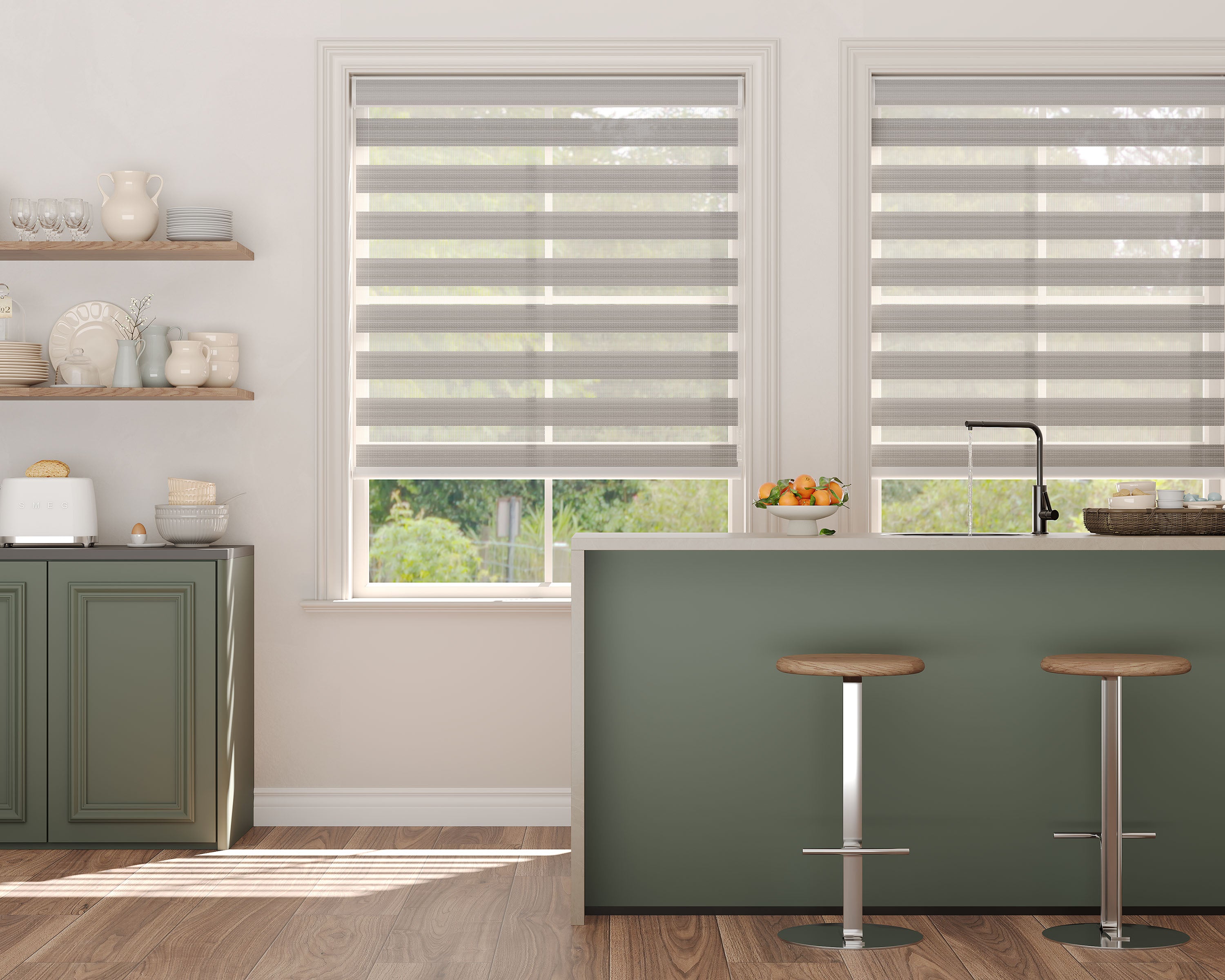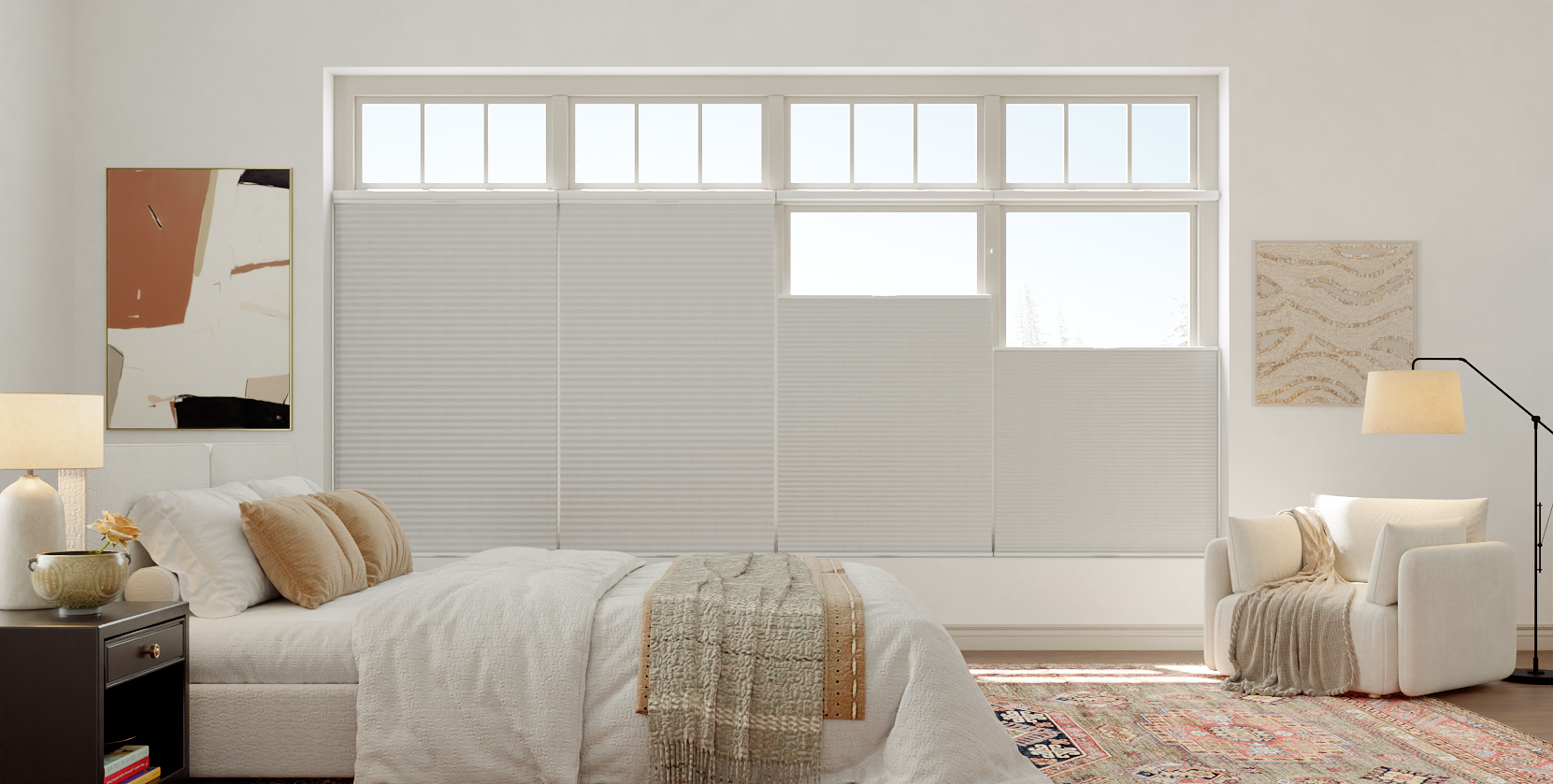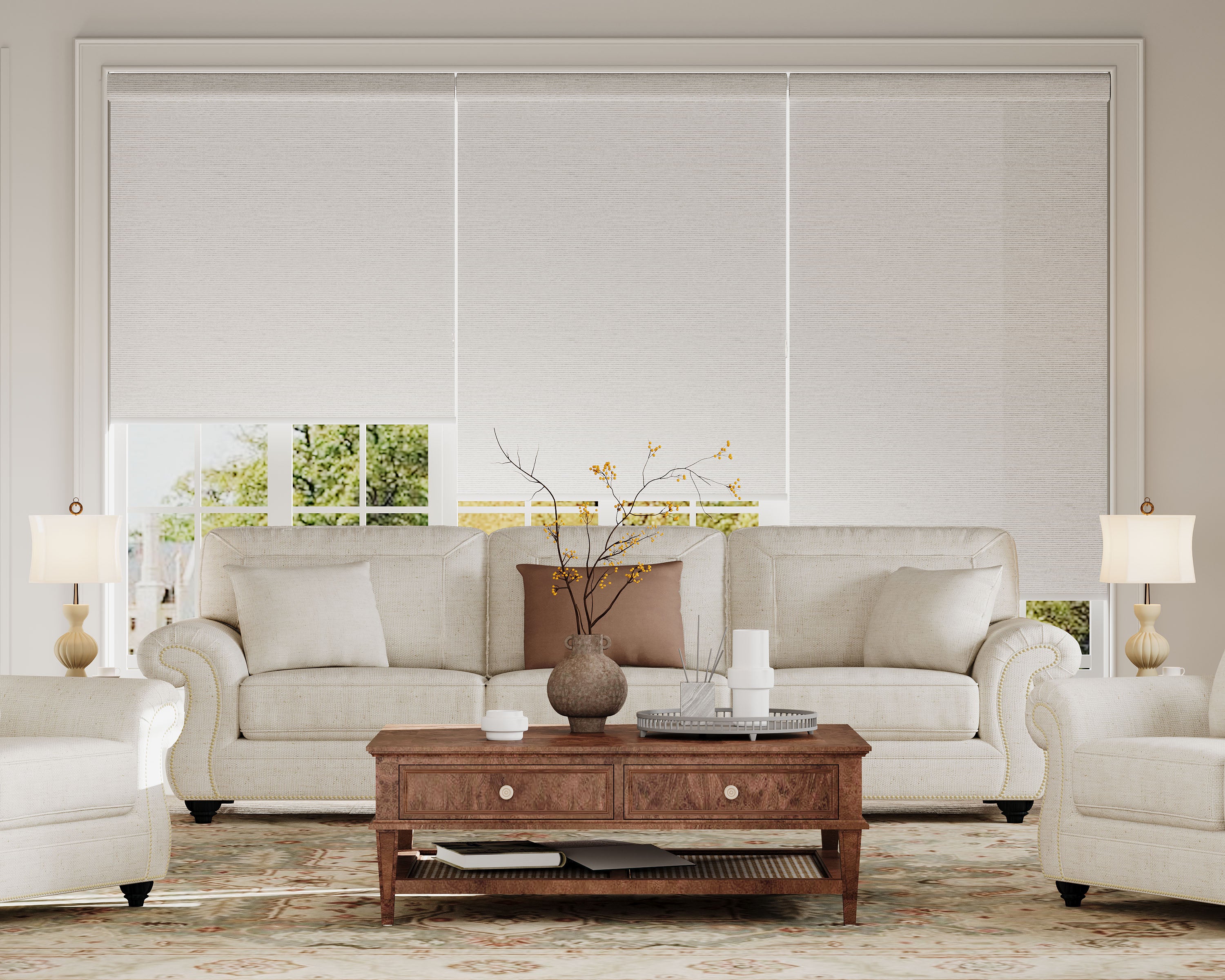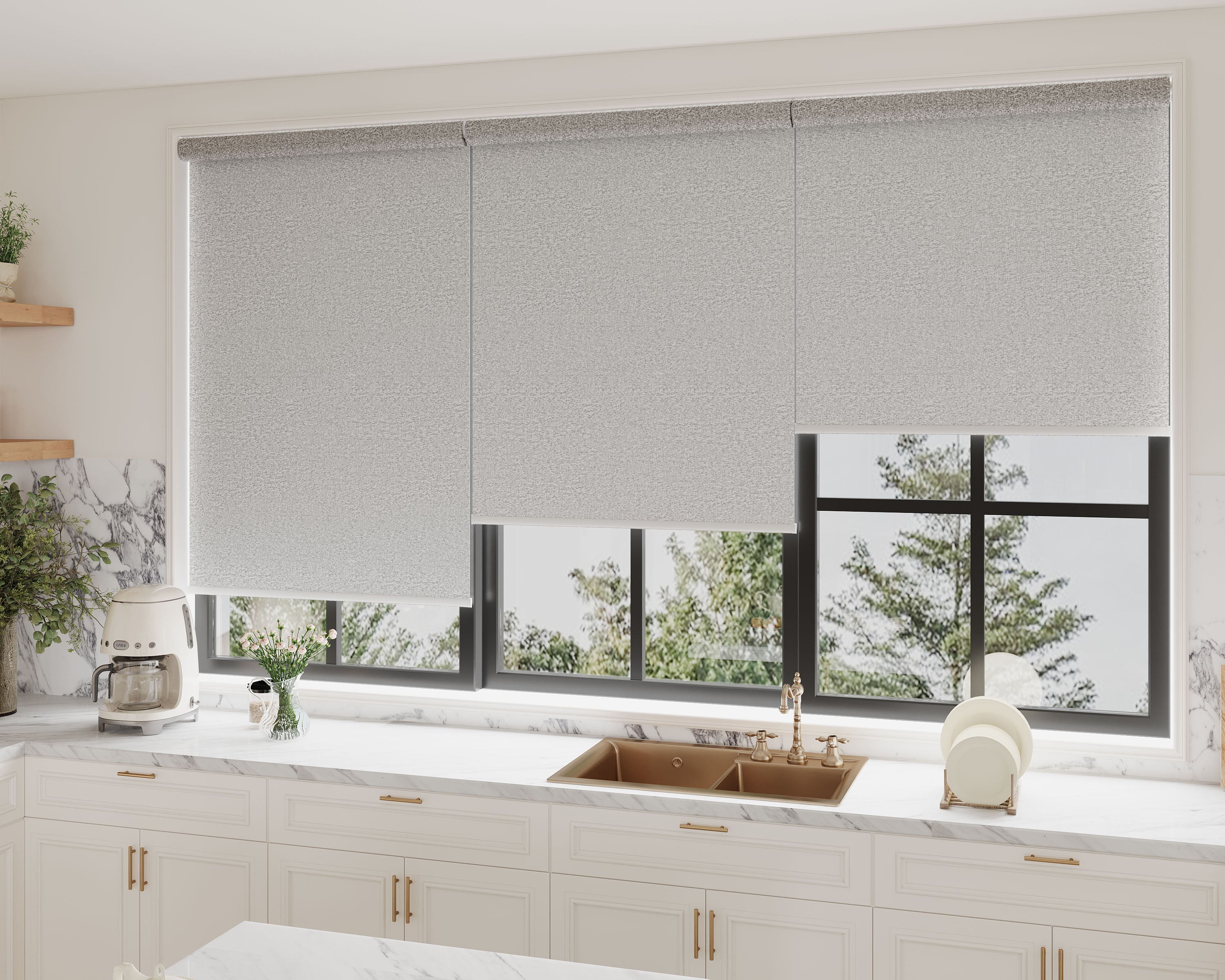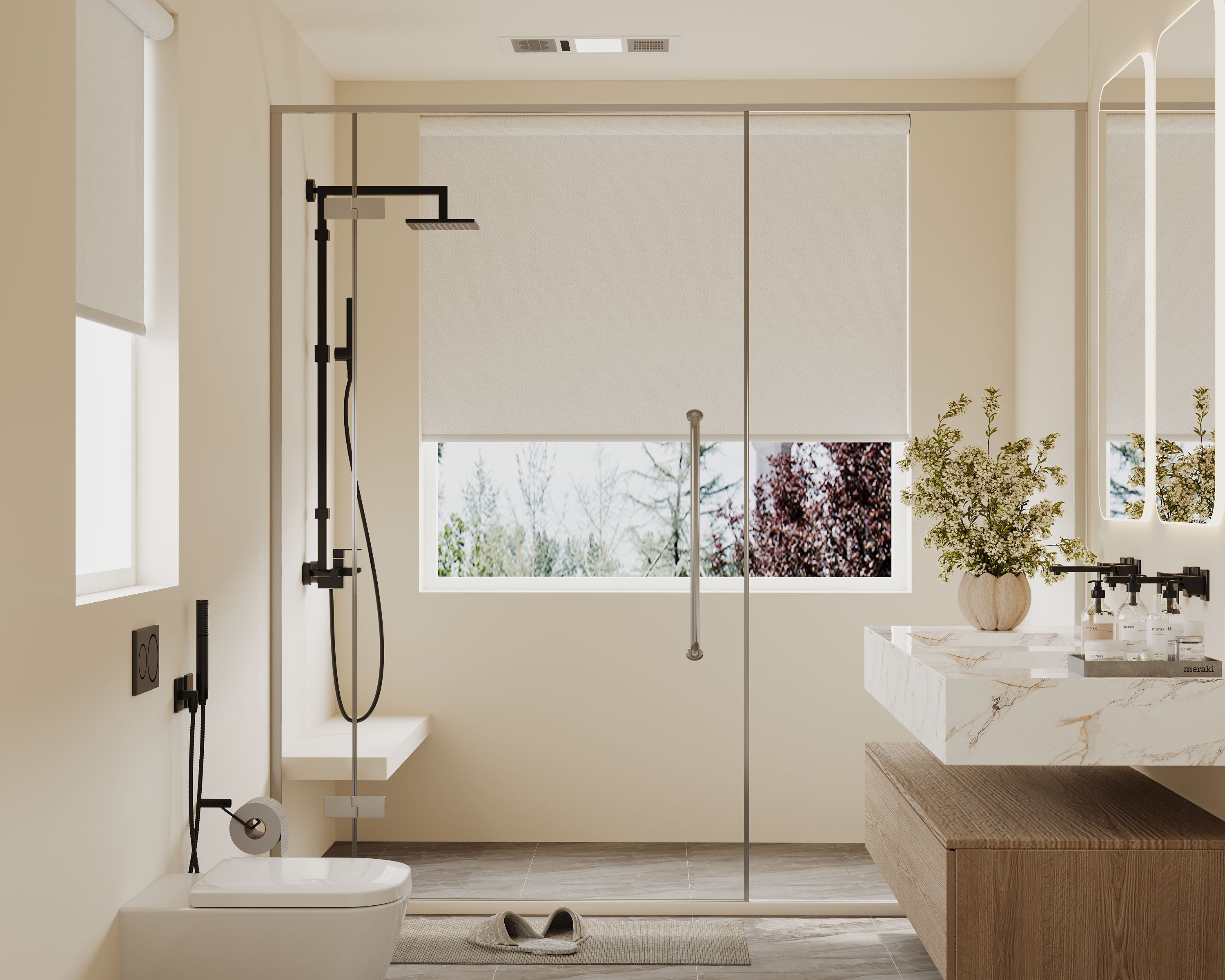Explore our top collections, including Roller Shades, Zebra Shades, and Blackout Shades.
It’s no secret that we love the wide-open look of open-concept homes. The abundance of sunshine and fluid layouts make our living spaces feel bigger and brighter, but they also raise a familiar question: how do we keep that light while holding onto our privacy? Finding the right balance between privacy and natural light means thinking carefully about everything from window treatments to how we arrange our rooms.
We don’t have to choose between living in a fishbowl and shutting out daylight. With smart design choices, clever accessories, and a little creativity, we can enjoy good light and comfortable seclusion at the same time.
Key Takeaways
- Open layouts call for specific strategies for both privacy and natural light.
- The best solutions mix smart tech, thoughtful decor, and clever architecture.
- Avoid common mistakes by considering materials and tweaking daily routines.
Understanding Natural Light in Open-Concept Spaces
Getting natural light right in open-concept homes changes how we live and feel. Layout, window placement, and sunlight exposure all shape atmosphere and comfort.
How Light Moves Through Open Interiors
Sunlight acts differently in open-plan setups. With fewer walls, daylight travels much farther and more freely between rooms. This helps us create brighter, airier living spaces.
But light doesn't always reach every corner. Areas near windows soak up direct sunshine, while spots far from exterior walls can feel dim, especially in large or L-shaped rooms. Reflective surfaces—think pale floors, walls, and ceilings—bounce daylight deeper inside and soften shadows.
Furniture and objects can block or filter this flow of light, too. Tall bookshelves or cabinets sometimes cast shade where we least expect it. A thoughtful layout helps keep everything balanced.
Benefits and Drawbacks of Abundant Daylight
Let’s be honest, most of us crave sunlight for its warmth, energy, and mood-boosting effects. Daylight can trim electric bills, support natural sleep cycles, and make our décor really pop. Sunlight in shared spaces brings the outdoors in, keeps us energized, and makes gatherings feel more alive.
But it’s not all sunshine. Too much daylight creates glare on screens, overheats rooms in summer, and can fade textiles or artwork faster than we’d like. Privacy also becomes a concern, especially near large windows and glass doors.
Here’s a quick comparison:
| Pros of Abundant Daylight | Cons of Abundant Daylight |
|---|---|
| Reduces electricity use | Can cause glare |
| Boosts mood and wellness | Fades fabrics and finishes |
| Enhances decor and color | May compromise privacy |
| Brings outdoor views indoors | Can raise indoor temperature |
Impact of Orientation and Window Placement
The direction our home faces and where we put windows make a big difference in the light we get. South-facing windows (in the Northern Hemisphere) usually bring the most consistent, intense sunlight, while north-facing ones catch softer, cooler light.
East-facing windows capture that lovely morning glow—great for kitchens or breakfast nooks. West-facing windows can cause strong afternoon glare and heat, especially in summer. Placement also affects privacy, since big windows at street level invite more eyes.
Skylights, clerestory windows, and glass doors offer more ways to usher daylight into deeper zones. If we pair careful positioning with smart shades or sheers, we can welcome daylight while keeping nosy neighbors and afternoon heat at bay. It's a balancing act, but worth it.
Privacy Challenges Unique to Open-Concept Homes
Open-concept designs invite more sunlight and connection but also bring privacy headaches. Protecting our sense of personal space gets trickier when fewer walls and doors separate rooms, views, and daily activities.
Zones Without Walls: Balancing Exposure
In open-concept homes, communal areas like living rooms, kitchens, and dining rooms often merge. Without partitions, sounds, sights, and activities flow easily from space to space. Want to sneak a snack at midnight? If the kitchen's wide open, everyone will know.
One big challenge is keeping privacy during gatherings or from other household members. Setting up defined activity zones with furniture, rugs, or decorative screens helps establish some separation. Tall bookcases or plants can give us a subtle visual break, offering privacy without blocking daylight.
Sometimes, just one well-placed element—like a freestanding cabinet—reduces exposure, especially near workspaces or bedrooms.
Neighborhood Visibility and Sightlines
Open layouts let in more light, but they also let others see more of our homes from outside, depending on window placement. Floor-to-ceiling glass or wide patio doors can make our lives feel like an aquarium for neighbors or passersby.
Here’s a quick look at privacy and exterior sightlines:
| Visibility Source | Common Areas Exposed | Simple Solutions |
|---|---|---|
| Street-facing windows | Living, dining, entryway | Sheer curtains, shades |
| Shared yard/fence lines | Kitchen, family room | Frosted glass, screens |
| Adjacent balconies | Bedroom, office nook | Privacy film, plants |
The orientation of windows and openness can make us feel a bit “on display.” Layering window treatments like blinds, curtains, or interior louvers lets in light while keeping curious eyes out. Even a few tall shrubs outside can lower sightlines without darkening our interiors.
Managing Interior Transparency
Without traditional walls, interior transparency becomes a thing. Sounds travel easily, and it's common to see straight from the front door into private living spaces. This means less discretion for work calls, reading time, or even an afternoon nap.
Frosted glass panels or partial dividers help minimize this feeling without taking away the airy effect. Sometimes, a sliding barn door or lightweight curtains can offer a quick fix for closing off areas only when needed.
Acoustics shift, too; every clink, laugh, or voice carries further. Rugs, soft furniture, or wall hangings can muffle sound and carve out more private corners, giving us a bit of breathing room even with fewer walls.
Smart Window Treatments for Balance
Combining privacy with natural light gets much easier when we use smart window solutions. The right window treatments give us control, style, and function without sacrificing the airy feel that open-concept spaces provide.
Layered Curtains and Shades
Layered window treatments let us tailor privacy and light by stacking different materials. For example, we can pair blackout panels with lighter sheer curtains, blocking out light at night or softening daytime sun.
This combo makes it easy to adjust our windows depending on what we need. If we want more daylight, just pull back heavy drapes to reveal the sheers. At night or when neighbors pass by, we can close everything for total privacy.
Layering also adds a design touch, turning windows into focal points. Flexibility, comfort, and style—all in one setup. No one likes wrestling with stubborn blinds, so smooth-gliding hardware is a must.
Automated and Motorized Solutions
Automated blinds and shades bring real convenience. With a remote, smartphone, or even a voice assistant, we can open or close window coverings from across the room or on a preset schedule.
This tech shines in hard-to-reach spots, like high transom windows. It’s perfect for balancing privacy as sunlight changes through the day. Scheduling blinds to open at sunrise and close at dusk? Totally doable.
Some systems sync with home automation platforms. Smart solutions save us steps and help us get the most out of both privacy and light—all with a tap or a quick voice command.
Sheer Fabrics for Soft Filtering
Sheer fabrics are a simple, stylish way to keep interiors bright while adding a little privacy. These lightweight materials diffuse sunlight, create a soft glow, and keep curious eyes from seeing straight inside.
Sheers come in all sorts of colors, patterns, and textures, so matching our décor is pretty easy. For more control, some folks pair sheers with adjustable blinds or roller shades behind them.
Sheers work especially well in shared spaces where we want light but don’t love feeling exposed. They balance openness and comfort—just right for open-concept layouts. If we want softness, privacy, and simplicity, sheers are a no-fuss choice.
Architectural Strategies for Privacy
Balancing the flow of open space with pockets of privacy takes planning and a few clever tools. We can create quiet corners and hidden retreats with practical features that don't block natural light or compromise style.
Transitional Partitions
Transitional partitions let us customize privacy on demand. Sliding doors, folding panels, and pivoting screens can instantly section off a workspace or reading nook. When open, these features keep the home's spacious feel and let sunlight sweep through.
We might use frosted glass, wood slats, or even perforated metal for partitions. Each one offers a different blend of opacity and openness. Maintenance is usually minimal, but the hardware should work smoothly.
Often, these movable elements double as design statements:
- Bold colors add vibrancy.
- Geometric patterns create visual interest.
- Light filters keep things bright.
Creative Use of Glass and Screens
Glass is a favorite for dividing without darkening. Using frosted, textured, or tinted glass panels gives us separation without blocking daylight. These panels can frame an office, enclose a shower, or line a hallway with both discretion and elegance.
Screens—fabric, metal, or wood—are just as versatile. Fixed, folding, or rolling styles mean we can move or remove them as our needs change. We get privacy, flexibility, and a dash of personality. Not bad, right?
Tip: Place glass or screens where we want privacy most, like bedrooms or bathrooms, and mix transparency levels to suit each space.
Partial Walls and Built-Ins
Partial walls add structure without making rooms feel closed off. Half-walls, knee walls, or pony walls define spaces like a kitchen from a living area, suggesting boundaries while letting conversation and light flow.
Built-ins take things further. Bookcases, planters, aquariums, or banquette seating all double as privacy buffers and handy storage. They look intentional, avoid clutter, and can fit almost any style.
Here’s a quick breakdown:
| Feature | Privacy | Light Flow | Extra Function |
|---|---|---|---|
| Partial Walls | Moderate | Good | Adds definition |
| Built-In Bookcase | High | Moderate | Storage/Display |
| Banquette | Low | Excellent | Seating |
Partial walls and built-ins often give us just what we need to carve out private zones without feeling boxed in.
Decor Ideas to Preserve Light While Enhancing Privacy
We can keep open-concept spaces bright and airy without turning our homes into fishbowls. The right choices in glass treatments, plant placements, and floor plans give us privacy while still letting the sun pour in.
Frosted Glass and Decorative Film
Frosted glass panels and window films are privacy lifesavers with a ton of style options. They diffuse sunlight, so you still get that bright, natural vibe, but no one’s peeking in. It’s a simple way to keep things open and airy without feeling on display.
Films come in all sorts of patterns—geometric, floral, subtle gradients—so matching your decor isn’t a hassle. Installing them? Super doable. Just measure, cut, and smooth them onto the glass. What’s really nice is how easy it is to swap them out if your taste changes or you’re itching for an upgrade.
Here’s a quick comparison:
| Option | Privacy Level | Customization | Easy to Remove? |
|---|---|---|---|
| Frosted Glass | High | Low | No |
| Decorative Film | Moderate-High | High | Yes |
You get privacy, visual interest, and flexibility—no heavy drapes required.
Strategic Plant Placement
Plants aren’t just for looks—they’re surprisingly effective for privacy in open spaces. Tall potted trees like fiddle leaf figs or bamboo near windows and corners break up sightlines but keep the sun pouring in.
Grouping smaller plants on shelves or sills adds layers of coverage without looking forced. Hanging planters or vertical gardens? Those divide spaces gently, letting light filter through the leaves.
Plants bring in texture, color, and a little extra peace from wandering eyes. Rearranging them is half the fun, and you don’t need tools or a plan—just move them around when the mood strikes.
Layered Floor Plans
Walls aren’t the only way to split up space. Layering your layout with open shelving, screens, or half-walls defines zones while keeping things bright. Freestanding bookcases or slatted wood panels separate areas but don’t block light.
Sliding barn doors or glass partitions can close off rooms temporarily. Open them up, and everything flows again—sunlight included.
Furniture placement helps too. A high-backed sofa or a console table behind it can act as a soft divider. This layered approach lets you adjust how you use each area throughout the day, depending on what you need.
Tech Solutions for Controlling Visibility
From switchable glass that goes from clear to opaque, to blinds you control with a tap, tech makes it so much easier to enjoy sunlight and keep nosy neighbors out. You can fine-tune privacy and daylight, room by room, with just a little tech magic.
Smart Glass Innovations
Smart glass—sometimes called switchable or electrochromic glass—lets you turn clear windows opaque in seconds. Press a button, say a command, or set a schedule, and you control when your space is visible. That’s privacy without sacrificing your precious daylight.
Some smart glass panels dim, too. Adjust the tint to cut glare but keep things bright. Unlike old-school frosted glass, smart glass shifts from fully transparent to totally private whenever you want. It’s a flexible choice for open-concept homes.
Here's what smart glass can do:
| Feature | Benefit |
|---|---|
| On-demand privacy | Prevents unwanted views |
| Adjustable transparency | Controls light without blinds |
| Minimal design intrusion | Sleek, unobtrusive look |
It’s pricier than regular windows, but if you value convenience and control—especially in busy rooms—it might be worth it.
Remote-Controlled Blinds
Remote-controlled blinds give you privacy and natural light, all from your phone or a wall switch. Roller shades, venetian blinds, and vertical panels work on almost any window and can be adjusted by app, remote, or with a smart home assistant.
It’s handy for hard-to-reach windows, or if you just want to impress guests without leaving the couch. Some models let you set schedules so blinds open with sunrise and close at bedtime—privacy at night, sunshine by day, no effort.
A few things to keep in mind:
- Material: Light-filtering fabrics let daylight in but blur the view.
- Integration: Many options sync with Alexa, Google Home, or Apple HomeKit.
- Energy savings: Automated blinds help cut heating and cooling bills.
With all the styles and controls out there, you’ll find something that fits your home and your privacy needs.
Lifestyle Adjustments for Comfortable Living
Balancing daylight and personal space often means rethinking how we use and separate rooms. Smart design choices can keep things comfortable and private all year long.
Flexible Room Dividers
Movable dividers quickly add privacy without closing off the room. Sliding panels, folding screens, or bookshelf partitions help carve out quiet nooks or work zones, then open up for a unified, bright space.
Fabric curtains are a budget fix and come in tons of patterns. Frosted glass panels block sightlines but keep light flowing. Here’s a quick comparison:
| Divider Type | Privacy Level | Light Transmission | Flexibility |
|---|---|---|---|
| Sliding panels | Moderate-High | Moderate | High |
| Fabric curtains | Moderate | Varies | High |
| Bookshelves | High | Low-Moderate | Moderate |
| Frosted glass | Moderate | High | Low |
Try different options and see what fits your daily routine best.
Adapting to Seasonal Changes
Our light needs change with the seasons. In summer, blocking direct sun keeps things cool and reduces glare. Sheer shades, light-filtering blinds, or leafy plants as sun blockers help control how much comes in.
Come winter, you’ll want to grab every bit of daylight to warm up and save energy. Retractable shades and lighter window treatments are easy to adjust. Swapping heavy drapes for voile panels can brighten even the gloomiest days.
A quick seasonal checklist:
- Use thermal curtains in winter to hold in heat.
- Try UV-filtering blinds in summer to protect furniture.
- Move furniture to chase the sun and catch warm spots when it’s cold.
Staying flexible keeps your home comfy and your mood up, whatever the weather’s doing.
Evaluating Materials and Finishes for Privacy
Picking the right materials and finishes is key for balancing openness and privacy. Details like tinting or surface finish can make or break the vibe—nobody wants to block out all that lovely sunlight just to feel secure.
Window Tinting Options
Window tinting’s an easy win for privacy and glare control. You’ve got choices:
- Reflective Films: Mirror effect outside during the day.
- Frosted Films: Translucent, diffuses light, blocks direct views.
- Smart Tints: Flip a switch, goes from clear to opaque.
Some films block more light than others, so if you want to keep things bright, skip the heavy tints. Don’t forget to check UV protection and maintenance—anti-scratch and easy-clean features are a lifesaver for busy homes.
Surface Reflectivity and Diffusion
The finish on glass, walls, and furniture affects both light and privacy. High-gloss surfaces reflect light but can create glare and act like mirrors at night—not ideal for privacy. Matte or satin finishes diffuse light and limit direct lines of sight.
Table: Surface Types and Effects
| Surface Type | Impact on Privacy | Light Quality |
|---|---|---|
| High-gloss Glass | Low | Reflective |
| Frosted Glass | High | Diffused |
| Matte Walls | Medium | Soft |
If you want privacy without turning your place into a bunker, go for surfaces that soften and scatter light. Textured glass or layered sheer curtains add visual privacy and let the sun pour in. Your plants will thank you, too.
Common Mistakes to Avoid in Open-Concept Privacy
Balancing privacy and natural light isn’t always as simple as it sounds. Open spaces can feel inviting or, if you’re not careful, a little too exposed (or even gloomy).
Overdoing Window Coverings
It’s tempting to pile on curtains and shades, but too many layers can make your home feel smaller and darker. Sheer curtains and minimalist blinds usually get the job done without making your windows look like cave entrances.
Bulky drapes or blackout curtains are fine for bedrooms, but in living areas, try translucent roller shades or adjustable blinds so you can tweak privacy and light as you like. For example:
| Covering Type | Pros | Cons |
|---|---|---|
| Sheer Curtains | Softens light, stylish | Limited blocking |
| Venetian Blinds | Adjustable, modern look | Need regular dusting |
| Layered Blackout | Great for sleep, full block | Removes all natural light |
You don’t have to hide every window behind layers of fabric. Let the light work for you and keep control simple.
Blocking Too Much Natural Light
Sometimes we go overboard with privacy and end up blocking all the sunlight. Placing big furniture, solid dividers, or heavy plants right in front of windows kills the glow you want in an open layout.
Stick with see-through dividers, like frosted glass or open shelving, for coverage without the cave effect. Hanging plants or slim blinds add screening but let the light in.
Try pulling furniture away from windows or using reflective surfaces to bounce sunlight deeper into the room. The idea is to carve out privacy without making the space feel shadowy or closed off. Let the sun join the party—you can still keep neighbors at a distance.
Frequently Asked Questions
Finding the balance between privacy and natural light keeps homes open and comfortable. Here are some practical options, from creative window solutions to clever lighting tricks, to help you keep things airy without giving up seclusion.
What are some creative window treatments that offer privacy without sacrificing sunlight in an open-concept home?
Sheer curtains and voile panels add softness but let sunlight through. Top-down, bottom-up shades let you cover just the part of the window where you need privacy. Layering translucent roller blinds with drapes gives flexible control all day.
Can strategically placed mirrors enhance privacy and light flow in a spacious living area?
Absolutely. Mirrors bounce light deeper into rooms and make everything feel brighter. If you position a mirror opposite or near a window, you get more sunlight and can draw attention away from private spots. With a little planning, mirrors pull double duty as design and light boosters—no extra exposure needed.
What type of window film provides seclusion while letting in ample daylight in my open floor plan?
Frosted window film keeps things private but still lets in plenty of natural light. One-way privacy films let you see out but block views from the outside during the day. For a custom look, try subtle patterned or etched films instead of going fully opaque.
How can I use indoor plants or room dividers to discreetly section off areas without losing the open, airy feel?
Tall leafy plants like fiddle leaf figs or snake plants make green privacy screens that don’t block all the light. Open shelving units work as dividers and add storage without building a wall. Lightweight, see-through screens are easy to move for flexible privacy.
Are there particular shades or blinds recommended for maintaining an open feel yet ensuring personal space?
Solar shades filter sunlight and cut glare but don’t block your view completely. Light-filtering cellular shades let light through while adding separation. Pairing roller shades with sheer panels gives you a nice mix of openness and privacy—really the best of both worlds.
What lighting techniques can give a cozy yet open feel during the evenings when natural light is minimal?
Mixing floor lamps, table lamps, and wall sconces helps set just the right mood while still making the room feel bright enough to move around. I like using dimmer switches—you can tweak the light for whatever’s going on. Sometimes I’ll add string lights or hide accent lights behind shelves; they give off this gentle warmth that somehow keeps things feeling open, not boxed in.

